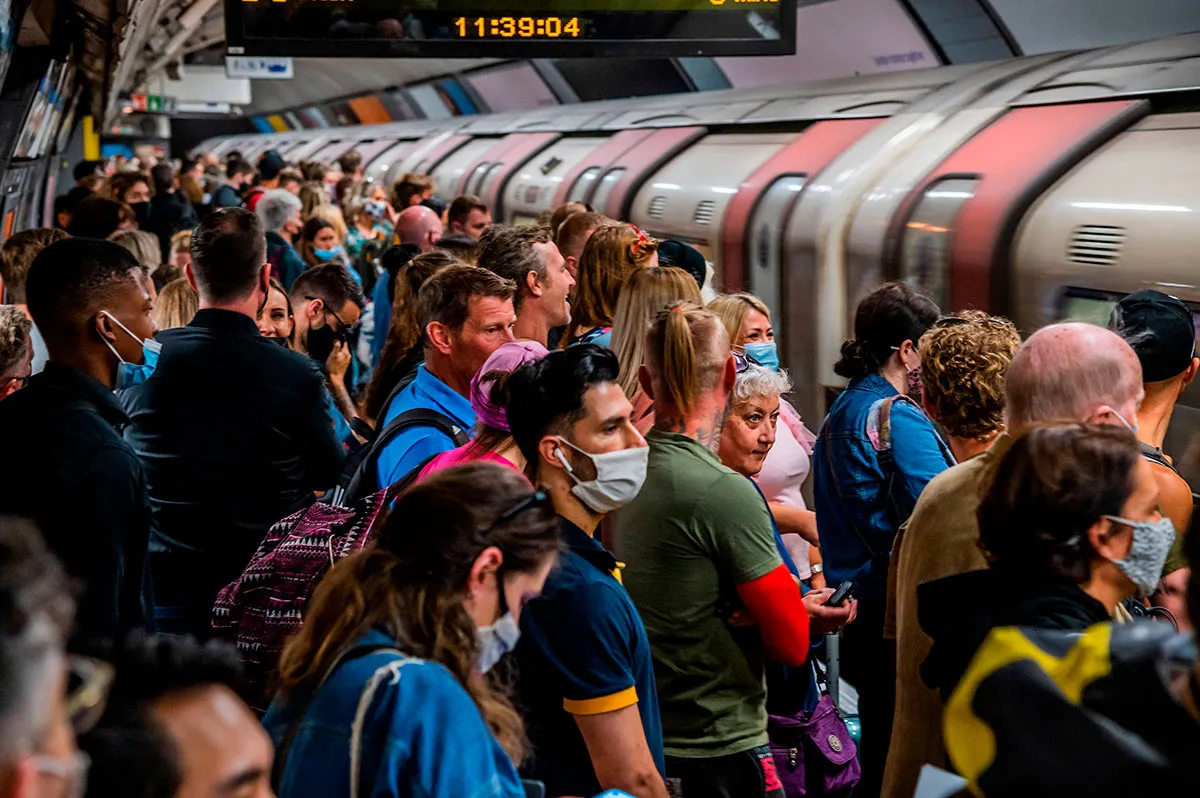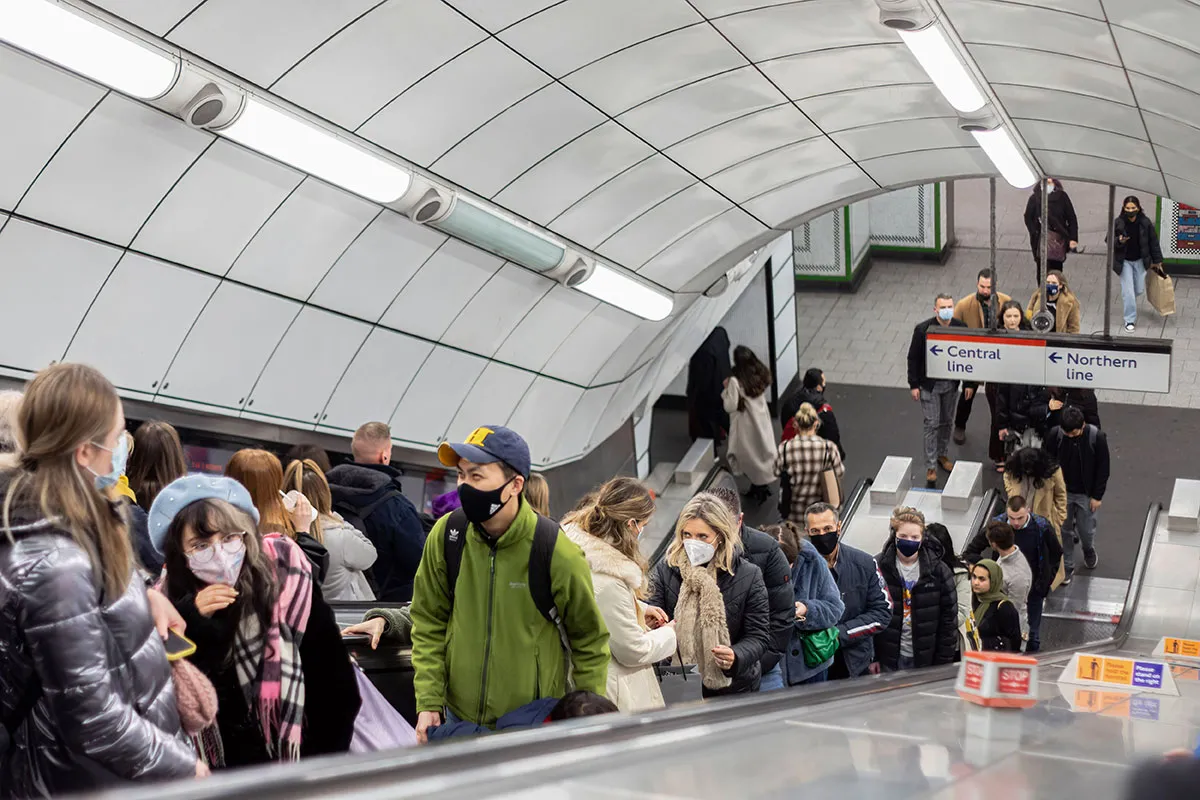On any given weekday, the London Underground sees up to five million passengers hopping on and off its network. Its 11 lines serve 272 stations, and at peak times there can be over 500 trains hurtling around beneath the streets of London.
Despite its constant use since the 19th Century, the London Underground has been relatively under-researched. While other modes of transport have been studied and updated accordingly – think back to when we didn’t have seatbelts in cars, or airbags – the sprawling tube system has remained largely the same.
The pandemic did provide Transport for London (TfL), who manage the Underground, the opportunity to make some improvements. Ventilation systems were assessed and according to the Mayor’s Transport Strategy Update in 2021 "the London Underground ventilation infrastructure is typically designed in excess of statutory minimum requirements with an adequate provision of fresh air."
But how fresh is the air that you’re breathing on the tube?
“The air, even before it gets to the Underground, isn't perfectly clean,” explained Dr David Green, senior research fellow at MRC Centre for Environment and Health, Imperial College London and a member of the UK’s Committee on the Medical Effects of Air Pollution (COMEAP). Green is also part of a group commissioned by TfL to regularly assess the COVID-19 risk on the Underground.
“The urban background air already has a low level of particulate matter, but on top of that you have all these extra emissions [coming from the tube].”
Read more about air pollution:
- A scientist's guide to life: How to protect yourself from indoor air pollution
- If we're going to combat climate change, we need to tackle air pollution too
- Spikes in air pollution cause 124 extra heart attacks per day
These include particles that come from the carriage moving along the rails, the brake blocks rubbing on the wheels, and the electrical connection between the collector plate and the live rail.
“So you’ve got iron rubbing on steel, steel on steel, iron and copper and barium from the brakers,” says Green. “There’s lubricant on the wheels and that contains things like carbon and molybdenum. We find these metallic compounds in the atmosphere [on the Underground].”
There are also particles that come from tube passengers, human and otherwise. Hair and skin cells, plastic fibres from clothing, and animal particulates from the creatures that call the Underground their home all contribute to the air quality.
Some particles are large enough to be caught by the hairs in our nose and throat, stopping them from getting into our lungs and causing damage there. These are typically referred to as PM10; particulate matter that is under 10 micrometres in diameter, or roughly 0.01mm.
The smaller particles that are under 2.5 micrometres in diameter are referred to as PM2.5, and these are the ones that can penetrate deep into the lungs and may also enter the bloodstream to be transported around the body, affecting the brain, heart and other organs. These are roughly about 3 per cent of the diameter of a human hair.
"We do not have enough evidence to state categorically whether pollution on the tube does or doesn’t harm your health, but we do know that exposure to PM2.5 is harmful. [This is shown by] studies from all over the world looking at deaths and hospital admissions, and studies on smaller groups of people including those with existing health problems.
"However, the dust in subway systems is quite different from PM2.5 in outdoor air and we do not know whether we can extrapolate these findings to the subway environment. So, we are now studying groups of vulnerable people and TfL staff to understand whether exposure to this type of PM2.5 is harmful."

On top of these small particulates, there are also gaseous pollutants in the air, including ozone, O3, and nitrogen dioxide, NO2. All are monitored by the UK Government’s Department for Environment Food & Rural Affairs, whose 2020 publication found that there has been a long-term decrease in all of the pollutants measured.
However, UK values for PM2.5 are still higher than the guidelines set by the World Health Organization, who recently changed their target to a mean annual exposure not exceeding 5 micrograms per metre cubed (μg/m3). Previously, this was 10μg/m3. The European Union limit is 25μg/m3, which is also the limit put in place by UK law.
“The new WHO guideline is very challenging and currently I don’t think any location in the UK will meet this,” says Green. One study by the UK government from 2020 found that four out of the top five urban environments with the greatest annual PM2.5 values were located in the London, South East or East of England regions. According to the latest COMEAP study, concentrations of PM2.5on the London Underground were many times greater than in other London transport environments, and greater than on other subway systems around the world.
However, when thinking about the air quality in the Underground, Green says it’s important to consider the context within the range of transport modes. A report in 2021 compared the PM2.5 averages across the tube, bus, car, three types of trains, cycling and walking.
Interestingly, the lowest exposures were found on electric and hybrid-style trains, even compared to cycling and walking – though this was not the case when these trains were in stations alongside diesel-powered trains.
“[Travelling on the tube] for one hour every weekday for 48 weeks a year (assuming 4 weeks holiday) on the Victoria line would increase your annual exposure to PM2.5 by 6.8μg/m3,” says Green. This increase is on top of individuals’ usual exposure to pollutants in the air, which varies by location, as some of the small particles measured as PM2.5 occur naturally, like dust and salt from the sea.
“This compares to 0.3μg/m3 at a background site in London, 2.6μg/m3 on an average London Underground line or 1.2μg/m3 in a car. But remember the car pollutes everyone else as well.”

For Green, this is key. “It is much better that people get on the London Underground than it is for them to get in their car to move around London. That’s because if you're sitting in your car, you're exposed to very high concentrations of vehicle pollutants.
"You’re sitting directly behind the exhaust of the car [in front], so you have a higher exposure than cyclists riding along the road or the pedestrians walking past. And the other thing is you're also polluting the world for everybody else. So, while the car isn’t worse than the tube in the case of PM2.5, it is much worse for other pollutants like nitrous oxides.”
For those who need to travel on the tube, then, it becomes a matter of choosing the best route. Green’s research found that the lines that run deeper are generally worse, like the Northern line, compared to higher level lines like the Circle, District, Hammersmith & City, and Metropolitan lines. Older lines and the type of trains used all play a part. So, Green suggests opting for newer lines and stations that have platform doors installed to reduce exposure. “But in general, there's not a great deal of choice,” he admits.
Green is also concerned with the health of the staff on the London Underground, who spend much longer on the tube or at one station. Unfortunately, there isn’t enough data to say yet what the long-term health impacts of this will be.
“We're working closely with Transport for London (TFL) to compare sickness absence from people working in London Underground with other TFL workers. We also want to look at pension data, to see if people who work on the tube may die a little earlier than people who don’t. But [these studies] are in the early stages at the moment.”
Tube passengers can be reassured that the risk of catching COVID-19, however, is minimal across all of the Underground.
“Tube trains and stations are cleaned with hospital-grade cleaning substances that kill viruses and bacteria on contact and provide ongoing protection,” a TfL spokesperson told BBC Science Focus magazine.
“Independent testing by Imperial College London has been carried out monthly since September 2020, taking swabs of touch points in stations, on buses and of air samples in ticket halls and up to the last verified testing round in December 2021 has found no traces of coronavirus on the public transport network.”
- Visit the BBC's Reality Check website at bit.ly/reality_check_ or follow them on Twitter@BBCRealityCheck
About our expert
Dr David Green is a senior research fellow at Imperial College London, where he leads the Aerosol Science Team. His research focuses on particulate matter in the air and how this affects the health of populations.
Read more fromReality Check:
